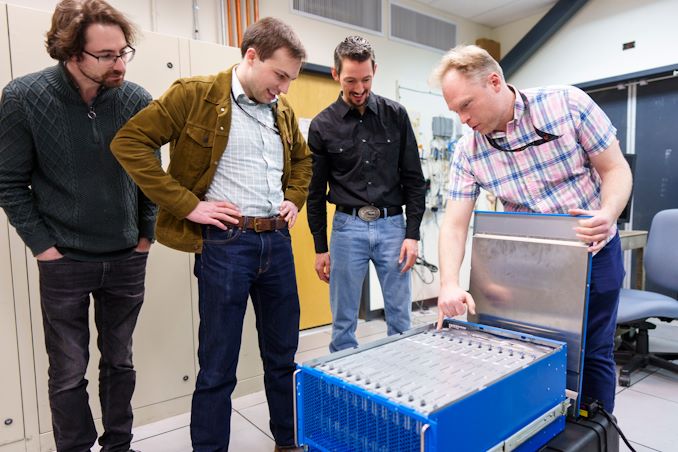### The Dawn of Hala Point: Revolutionizing Computing with a Brain-Like Approach
Ever found yourself marveling at how effortlessly our brains solve complex problems? Now, imagine a computer engineered to mimic that very process. Sounds like something out of a sci-fi novel, right? Well, brace yourself because the realms of neuromorphic computing are turning this fiction into reality, and the efforts to advance this field are picking up steam. Intel, in collaboration with Sandia National Laboratories, recently threw the spotlight on their latest marvel – the Hala Point neuromorphic system. This powerhouse of technology, boasting a jaw-dropping 1.15 billion neurons, is setting new records, not just in capacity but in the potential to revolutionize computing as we know it.
#### Hala Point: Power in Compactness
The Hala Point system isn’t just about brainy ambitions; it’s a marvel of engineering efficiency. Housing 1152 Loihi 2 processors, each mirroring the capabilities of a million neurons, this system occupies the physical space of, believe it or not, a microwave! With such a compact footprint and a relatively modest power appetite of 2.6 kW, it’s redefining what it means to be both powerful and efficient in the computing world. Intel’s Loihi 2 chips, the brains behind this operation, stand out not just for their small size but for their advanced make – sporting 2.3 billion transistors and built on the cutting-edge Intel 4 process.
#### A Leap Forward in Neuromorphic Computing
Replacing the older Intel system at Sandia, Pohoiki Springs, Hala Point is a giant leap forward. With ten times as many neurons and significantly higher performance, it’s like comparing a calculator to a supercomputer. But what’s all the fuss about neuromorphic computing? In simple terms, it’s about creating computers that think and learn like humans. By mimicking the intricacies of our brains, these systems aim to solve problems that leave conventional processors scratching their circuits and to do so in a way that’s more efficient and sustainable.
#### Expanding Horizons with Hala Point
What really gets the science and tech communities buzzing, however, is Hala Point’s potential to push the boundaries of neuromorphic computing. With a simulated neuron count roughly matching that of an owl’s brain, this system offers a new playground for exploring large-scale neuromorphic computing. Think beyond simple demonstrations to tackling real-world problems in physics, computer architecture, and more – all while opening new doors in AI, particularly in AI inference. Given the energy-efficient nature of neuromorphic computing, this could very well be a game-changer in how we approach the power-hungry domains of AI research and implementation.
#### Efficiency and Flexibility: The Neuromorphic Edge
One of the standout aspects of Hala Point’s testing phase has been its impressive efficiency, reaching new heights that rival, if not surpass, the current generation of commercial chips. What catches the eye, though, is the potential neuromorphic computing holds for augmenting neural networks with new data without the need for re-training. It’s like giving these systems the ability to learn and grow continuously, a feature that could redefine neural network adaptability and sustainability.
### Into the Future: The Path Ahead for Neuromorphic Computing
While Hala Point and its underlying technology are still in the realm of research and academic study, the vision is clear – to pave the way for commercial systems that not only emulate but also surpass the human brain’s processing prowess at even larger scales. The journey from lab to real-world application is filled with challenges, from refining algorithms to mapping out larger workloads. Yet, as Intel and Sandia continue to innovate and push the boundaries, the promise of neuromorphic computing growing from a laboratory curiosity to a cornerstone of future computing becomes all the more tangible.
So, what do you think? Are we on the cusp of a computing revolution that will see machines thinking and learning like us, or is neuromorphic computing just another step in the endless pursuit of technological advancement? Only time will tell, but one thing is for certain: The future of computing is looking more brain-like by the day.




